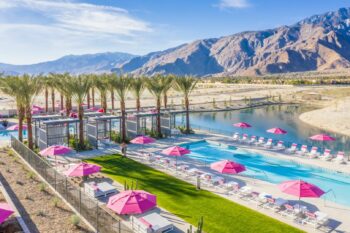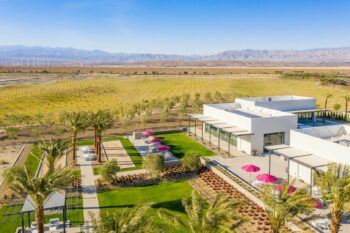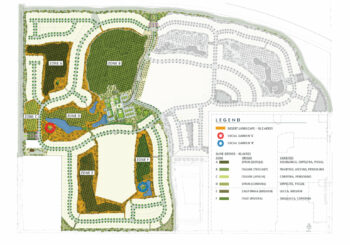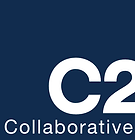
Three Ways to Create Effective Landscapes for Impactful Futures
This blog was contributed by Paul Haden, Founder/CCO of C2 Collaborative.
The idea of cost effective landscape crosses several lines of thought.

All landscapes — and I’m speaking of built landscape — begin with intention and audience. The process of defining your audience and the design intent are clearly the keys to moving forward. Yes, the “who, what, where, when,” counts – let’s start with the “who.”
The client, the user group, the interested agencies and the maintenance company – they are the “who.” The public/private realm – how do they intersect? Is the project a public sector design? A park plaza, trail or streetscape? They have to be understood in three key ways:
- Program elements
- Budget
- Maintenance responsibilities
A park, for instance, will require a design team of landscape architects, civil engineers and architects. The coordination of this team is the focus of the agency, and is crucial to effective project design. Typically, the program, the design intent will be provided by the agency. The elements of road access and parking, play courts and fields, lighting, fencing, planting and site furniture are a recipe that requires continual revaluation.
Key to the process is budget updating. This, in its most effective form, begins with the acceptance of the design studies. Typically, each discipline will prepare an estimate of costs, and doing so at an early development stage is a great asset in maintaining the subsequent design phases and schedule. The hard estimate of costs can then determine the commitment to or elimination of program elements. It also allows for a shift in schedule, if necessary.
Ultimately, the effectiveness of the design process is the adherence to these three principles:
- Establish your goals
- Maintain consistent communication within the team
- Make decisions early and stick to them
So, that is the process; let’s talk about design ideas.

The outdoor space—public or private, small or large—needs formative elements, such as:
- Structures
- Walls and fences
- Earth forms and mounding
- Hardscape features
- Lighting
- Planting
- Special features (i.e. fountains)
Let’s go back to our park as a landscape. The design has already reached for and established a sense of arrival, a design character and usability for visitors.
The utilization of the physical elements will establish the spaces and zones within the park. A parallel line of thought during the ideation and cost analysis process is maintenance. Effective landscapes must embrace a philosophy of maintainability. The long term health of landscape spaces must include a method to maintain the space to the intent of the design. The park is going to get significant use by individuals and groups of people for a host of uses and — in warmer climates — at a nearly continuous timeframe.
Play surfaces will wear and fray; equipment will require repair; trees and shrubs need consistent pruning and fertilization. Hardscape features will also require attention; cracking and heaving of walks and paving will occur; structures, walls and fences will need painting; lighting will undoubtedly need replacement and updating. The green waste, a byproduct of the pruning operation, can be recycled as mulch, and the mulching operations help retain moisture and reduce weed growth. Irrigation systems are features with a fairly high maintenance requirement – in spray head situations, heads must be checked regularly for clogging and coverage. Drip system needs flow check frequently as well. A clogged drip line often becomes noticeable only after a plant shows stress or dies. The maturity of a landscape shows up in the irrigation controller setting. Frequency and duration of valve timing can be adjusted as a green space grows and develops.
Two last considerations are useful in designing effective landscapes. The first is peer review. This is a process where a third party design team reviews the design and details of the landscape space. This group is tasked with providing review and recommendation to the client or agency as to the quality of the plans. Do they meet the goals of the design and will the landscape grow and be effectively maintained?
Lastly, is a program called post design review. This is an onsite evaluation of the project after it is installed. Conducted usually one to three years after completion, this is a checklist review of all design features. It ranks the success of design elements for function and maintainability. The results are very useful for successive landscape projects.

About C2 Collaborative
C2 Collaborative is a leading international landscape architecture design firm, responsible for some of the most cutting-edge and innovative projects in California, as well as across the U.S. and the globe. The firm leverages over three decades of landscape architecture experience to create innovative, modern spaces – from master-planned communities and resorts to commercial retail, residential and sensitive habitat programs – that integrate recreation, lifestyle, sustainability and health/wellness design components. Founded in 1987 and headquartered in Orange County, Calif., C2 Collaborative has won over 50 industry awards, including the National Association of Home Builders Awards, Golden Nugget, Major Achievements in Marketing and Excellence Awards, Brick in Architecture Awards, ICON Awards and more.